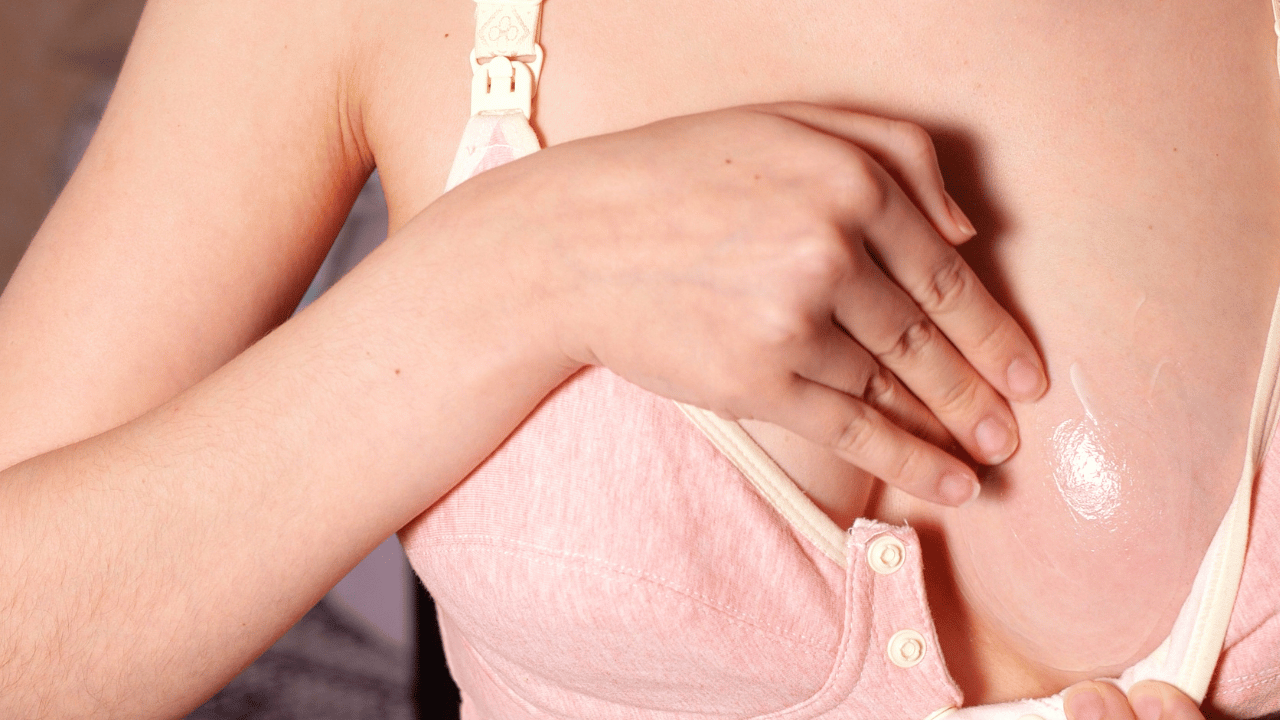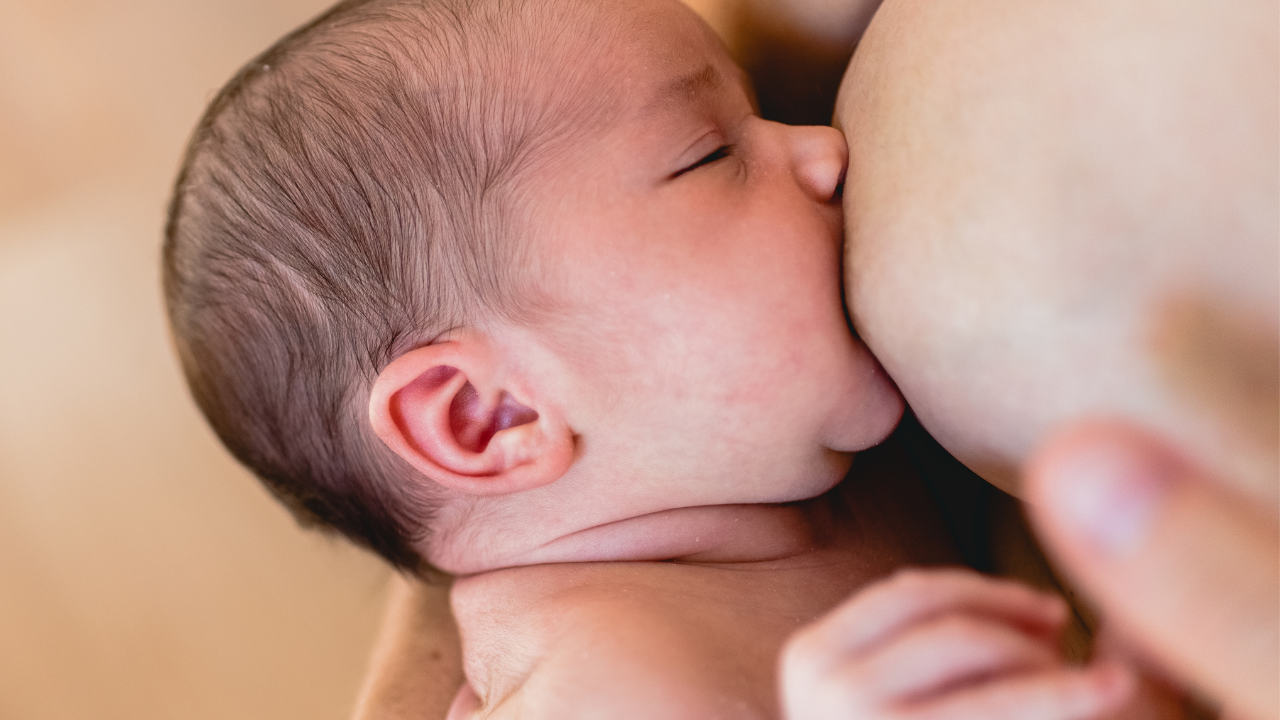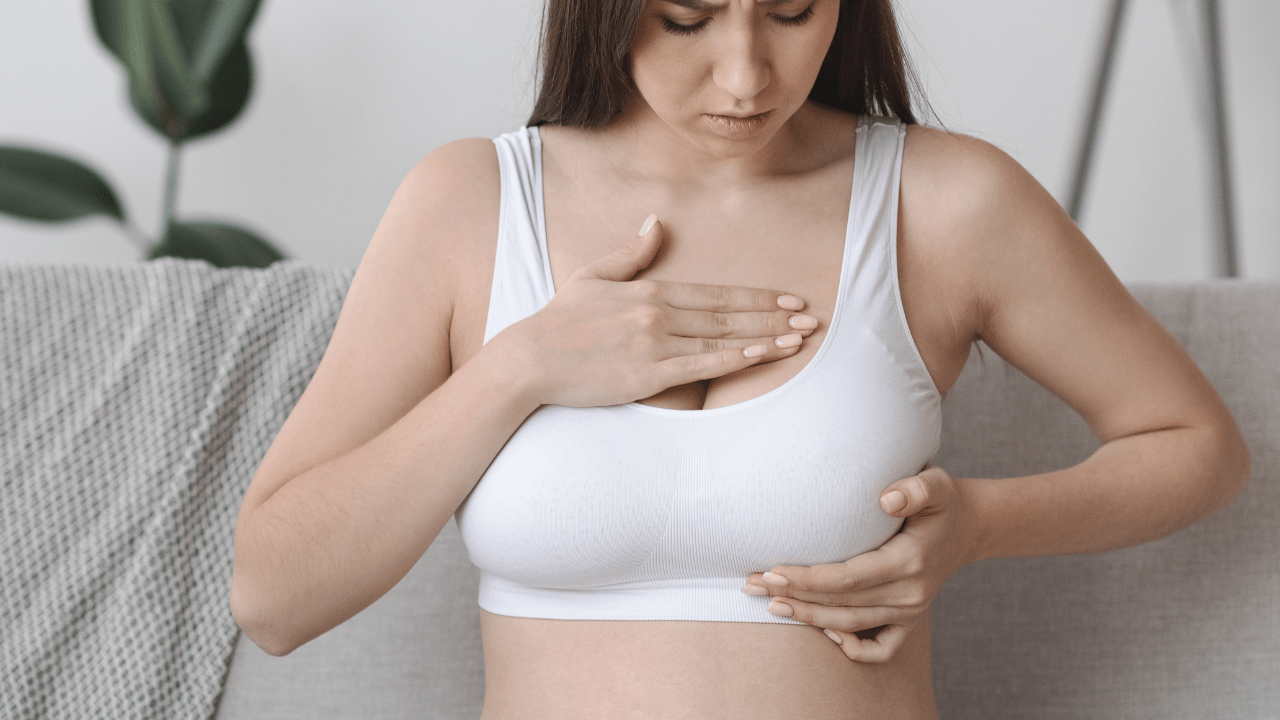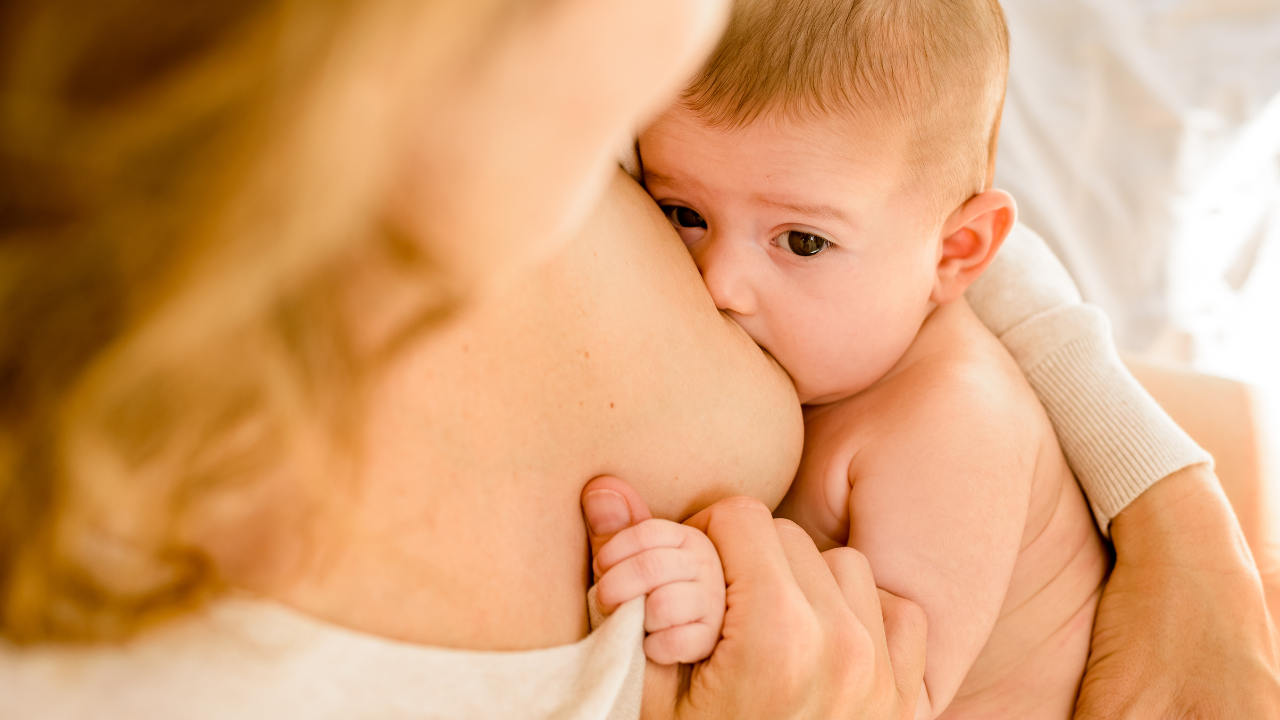Finding a Lump in Breast Tissue
This article delves into the types of breast lumps you may encounter, symptoms to watch for, and when to seek medical advice.

Table of Contents
- What's Normal?
- What to do if you find a breast lump
- Signs that it's not a plugged duct/mastitis
- Finding breast lumps in your armpit
- Ten possible types of breast lumps
- Prevention of breast lumps
- Diagnostic procedures and breastfeeding safety
- When to go to your doctor
Finding Lumps in Your Breasts While Breastfeeding
Lactating breasts feel lumpier than non-lactating ones; they contain milk, more blood, and more lymph. The quantity of milk in the breasts can also differ now and then, which will cause the breasts to feel lumpier at times.
During the first few weeks postpartum, when breasts are engorged, they will feel especially lumpy. You may feel small, tender lumps in breast tissue down the road. These small lumps are most probably blocked milk ducts; this is a common breastfeeding problem that is easily resolved.
If a lump in breast tissue has been around for longer than a week, and you have tried natural ways of clearing plugged ducts (see below), then you should see your doctor about it. Your doctor will decide which treatment is most suitable for your condition; some may include ultrasounds, needle biopsies, mammograms, lumpectomies, and blood tests. All these procedures can happen while you continue to breastfeed. If surgery is needed to remove a lump or cyst, it may reduce your milk supply.
Only on rare occasions is a breastfeeding lump cancerous, but early detection is critical. Breastfeeding will have to cease if you need to go for radiation or chemotherapy.

The Tushbaby Hip Carrier
With its ergonomic design and comfortable waistband, Tushbaby provides optimal support for you and your baby. Say goodbye to shoulder and back pain from traditional carriers, as Tushbaby evenly distributes your baby's weight, relieving strain and promoting better posture.
What to Do If You Find a Breast Lump During Breastfeeding
- Continue to nurse your baby. Breastfeeding can help to get rid of blockages.
- Massage your breasts to improve flow. Sometimes just gently massaging the lump towards the nipple can help to clear it.
- Check your baby's latch; a shallow latch can cause plugged ducts.
- Allow your baby to breastfeed from the boob with the lump first. Babies usually breastfeed more aggressively at the beginning of a breastfeeding session, which will help clear the blockage if there is one.
- Try various breastfeeding positions; a new position might stimulate other areas of the breast, helping to unclog the milk. Dangle feeding is often recommended for those mothers struggling with plugged ducts and milk blisters (blebs).
- Expressing milk after breastfeeding can help to drain the breast thoroughly.
- Breast compression while breastfeeding can help to get things flowing and will assist in dislodging milk.
- It might be a bleb if you notice a little white spot or blister on your nipple. Once opened up, any milk is free to escape. A bleb can sometimes lead to a blockage deep within the breast. See how to fix a nipple blister.
- Apply a warm, moist compress or take a warm shower to soften the breast tissue before a breastfeeding session.
- You can use a cold compress after breastfeeding to soothe a painful breast.

Signs That May Indicate Problems Other Than Plugged Ducts/Mastitis
- Your baby keeps rejecting the breast that contains the lump.
- The breast with the lump is starting to produce much less milk, even though your baby is drinking just as much from it.
- You have the symptoms of mastitis (1) but with no fever. The symptoms are also not resolved with antibiotics.
- A recurring plugged duct in the same area.
- Ways to self-check for breast cancer while breastfeeding.
Breast Lumps in the Armpit
Breast tissue extends into the armpit, and it is not uncommon to find lumps in the armpit area. The breast tissue that extends into the armpit is known as the “tail of Spence." Breast lumps in the armpit are common during the first few weeks postpartum when the mother is engorged (particularly when her milk comes in).
You may also have milk gland tissue that is not connected to the tissue in your breasts; this can be under your armpits and other areas of your body. This extra tissue may become engorged when the milk initially comes in but should calm down as normal engorgement subsides.
Lumps under the armpit may also occur later during the breastfeeding relationship if the mother has not emptied her breasts in a while, but this is rare. This happens because the milk overflows into surrounding tissue, including the tissue under the armpits. A mother must get any engorgement under control within two days, or she might develop a mastitis infection.
10 Possible Causes of Lumps While Breastfeeding
& Symptoms
"I'm breastfeeding and have a lump, but with no pain. Should I be worried?"
"Should I go to my doctor if I have a hard lump in my breast while breastfeeding?"
Here we discuss all the possible types of breast lumps and the symptoms to look out for each.

#1
Engorgement
Engorgement during the first few weeks after birth is normal. This occurs when your breasts are overfull; this can happen when your milk comes in, or your baby is not drinking enough.
Symptoms of engorgement include:
- Shiny taught skin.
- Hard, painful breasts.
- Nipples are pulled flatter than usual, making latching challenging.
- Lumps under your armpits.
Breastfeeding on demand will soon have your breasts producing just the right amount of milk for your baby. Try not to skip nursing sessions. See how to deal with engorgement.
#2
Plugged Ducts.
The most common type of breast lump is a plugged duct. Most blocked ducts do not require treatment and will clear on their own within a few days. They are typically small, hard, and tender to the touch.
Blocked ducts are often caused by the following:
- Not draining the breast well. Usually due to a shallow latch.
- Tight bras or clothing.
- Going too long between feedings.
Symptoms include:
- A lump in breast tissue that can vary in size from the size of a pea to an apple.
- A nipple bleb (a small blister on your nipple)
- Tender breasts.
- Your baby fusses on that specific breast because of the restricted flow of milk.
#3
Mastitis
These lumps, as well as the areas around them, are very painful. A fever is to be expected. The breast may be warm and red.
Other Mastitis Symptoms include
- A burning sensation inside the affected breast.
- Flu-like symptoms
Get to a breastfeeding-friendly doctor as soon as possible. A mastitis infection, if left untreated, can turn into an abscess.
#5
Cysts
Cysts are harmless lumps in breast tissue containing fluid, pus or gas; they can be easily moved inside the breast. It is best to see your doctor about this, as some cysts may cause problems.
Galactoceles (lacteal cysts) are cysts that are filled with milk due to a blockade of a milk duct. They do not hamper breastfeeding and are typically non-cancerous. These cysts are usually tender to the touch. Sometimes they are reabsorbed into the surrounding tissue; other times, they need to be seen to surgically.

#6
Fibrocystic Changes
Some women have lumpier breast tissue than others. Sometimes these lumps can become a little sensitive. These lumps are not dangerous and should not hamper your breastfeeding relationship in any way. Taking vitamin E supplements has been found to help in some cases.
Fibrocystic changes might appear as a sensitive, thick, or bumpy region in the breast. If the mother’s periods have already returned, the symptoms of the fibrocystic may worsen.
#7
Lipomas
Lipomas are fatty lumps in breast tissue that grows over a long period. They are usually soft and are not tender to the touch.
#8
Hematomas
A hematoma can be caused when the breast tissue has been damaged by injury or surgery. They are essentially a gathering of blood under the skin. This mass is sometimes sore, red, or distended, and the skin often looks bruised.
#9
Diabetic Mastopathy
These are non-cancerous lumps found in diabetic women. These do not inhibit breastfeeding; they are usually painless, movable lumps and are commonly irregular in shape.
#10
Breast Cancer
This is one of the rarer causes of lumps during lactation. These lumps are typically firm and pain-free; they cannot be moved around in the breast and are usually without a distinct border. Although, some forms of cancer have the same signs of mastitis, with swelling and pain. There may be roughening of the skin, which looks a lot like the skin on an orange. If you have the symptoms of Mastitis and they have persisted longer than three days, it would be best to see your doctor.
Lump in Breast Tissue Prevention & Breastfeeding
- Breastfeed on demand. Comfort feeding is recommended
- Wear well-fitted bras that do not have underwires. A tight bra can cause pressure and plugged ducts, leading to other problems.
- Do not wean abruptly. If you have to wean, decrease feeds by one or two per week.
- Avoid drinking caffeine and consuming too much fat, which some specialists say contributes to fibrocystic changes.
- Massage your breasts regularly. Learn more about the benefits of breast massage while breastfeeding.

Diagnostic Procedures and Breastfeeding Safety
- X-rays: Do not affect the milk.
- Ultrasound and CAT scan. Safe to continue to breastfeed.
- Mammograms: No research on safety has been done.
- MRI: Mom can continue to breastfeed directly afterward. New research finds that MRI compounds cannot be absorbed through breast milk.
- Fine needle aspiration: Fluid from the lump is removed, and the mother can breastfeed immediately afterward.
- Core biopsy: under local anesthetic, a larger, hollow needle is used to remove a piece of the lump. The mother can breastfeed immediately after.
- Surgical biopsy: A small opening is made, and the lump is removed under local anesthetic. Breastfeeding can continue if the incision is not near her nipple or where her baby’s mouth touches while breastfeeding.
- Fine needle biopsy: A few cells are removed for lab tests. The mother can breastfeed immediately after.
The mother must find a breastfeeding-friendly doctor and surgeon and let them know she would like to continue breastfeeding.
Remember that abrupt weaning can cause more problems and more infection. Breast milk helps to heal any injured areas inside and outside of the breast. Therefore, continued breastfeeding can help the mother recover (heal) faster.
Further Treatments
- Chemotherapy: Is incompatible with breastfeeding; The mother will need to stop breastfeeding.
- Any radioactive substances used during treatment: The mother will need to pump and dump her milk until the substances have cleared from her body.
- Radiation therapy: The mother can continue to breastfeed, but the breast that is treated may produce less milk after this therapy.
When You Need to Go to the Doctor
- If you see a puckering or dimpling of the skin around the lump.
- Any rash or red hue on the breast or nipple.
- Continuous discharge from the nipple.
- Persistent pain in your breast or armpit.
- Any swelling on your collarbone or in your armpit.
- Nipple retraction (pulling inward)
- A specific lump has been present for longer than one week.
Resources
1. Lactation Mastitis: Occurrence and Medical Management among 946 Breastfeeding Women in the United States.
